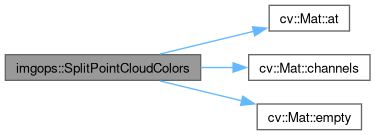238 {
241
242 for (
int y = 0; y <
rows; y++)
243 {
244 for (
int x = 0; x <
cols; x++)
245 {
246 double sumIntensity = 0.0;
247 double sumWeight = 0.0;
248
250
251 for (int j = -usDiameter; j <= usDiameter; j++)
252 {
253 for (int i = -usDiameter; i <= usDiameter; i++)
254 {
255 int neighborX = x + i;
256 int neighborY = y + j;
257
258
259 if (neighborX >= 0 && neighborX < cols && neighborY >= 0 && neighborY <
rows)
260 {
261 uchar neighborPixel = cvInputFrame.
at<
uchar>(neighborY, neighborX);
262
263
264 double spatialWeight = std::exp(-(i * i + j * j) / (2 * dSigmaSpace * dSigmaSpace));
265
266
267 uchar colorDistance = std::abs(centerPixel - neighborPixel);
268 double intensityWeight = std::exp(-(colorDistance * colorDistance) / (2 * dSigmaColor * dSigmaColor));
269
270
271 double bilateralWeight = spatialWeight * intensityWeight;
272
273 sumIntensity += bilateralWeight * neighborPixel;
274 sumWeight += bilateralWeight;
275 }
276 }
277 }
278
279
280 uchar filteredPixel = sumIntensity / sumWeight;
281 cvInputFrame.
at<
uchar>(y, x) = filteredPixel;
282 }
283 }
284 }












